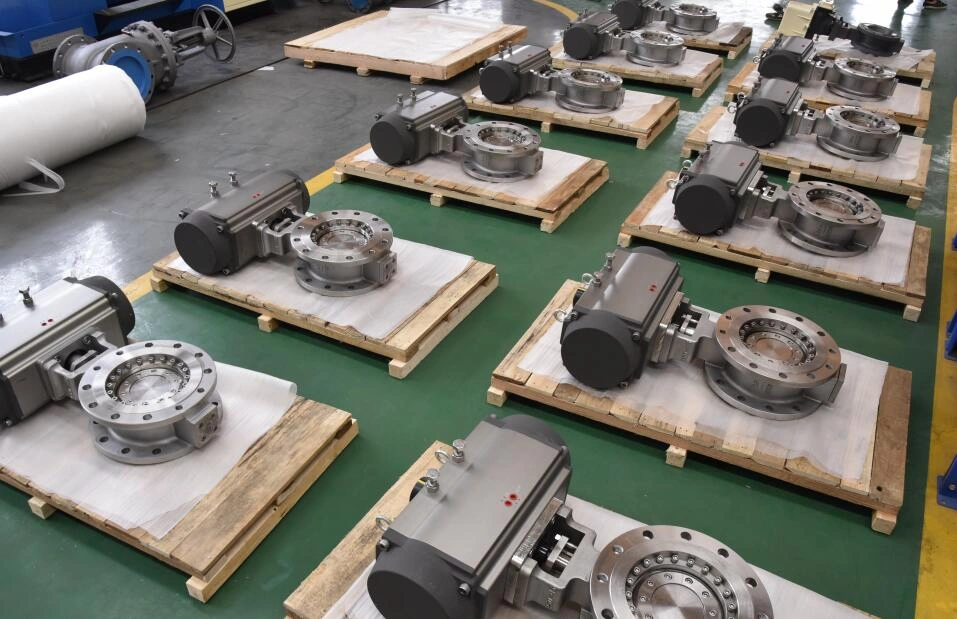High-performance butterfly valves utilize a unique triple-eccentric structure, achieving zero friction between the valve disc and the sealing ring. Line-to-surface contact exists during intermediate movement, creating a typical double-seat design.

Features of Pneumatic High-Performance Butterfly Valves:
1. High-Performance Regulating and Shutoff Type. It can be used as both a regulating valve and a shutoff valve.
2. Bidirectional sealing, unlike conventional one-way sealing, ensures reliable sealing even in the event of backflow or "air hammer."
3. The valve body utilizes integral casting technology, resulting in a compact, small, and lightweight structure.
4. The double-eccentric structure allows the valve disc to expand outward when closed, achieving a peripheral seal. When opened, the valve disc and sealing ring quickly separate, effectively preventing seal wear. This reduces operating torque and increases valve life.
5. The sealing ring design is innovative, utilizing internationally advanced technologies: the PTFE seal utilizes a "lip-tooth" self-sealing structure; the hard seal utilizes a "U"-shaped elastic seal. The sealing structure offers a long and reliable service life.
6. This valve offers high flow capacity and low flow resistance, second only to non-reduced O-ring ball valves of the same diameter.
7. This valve has a large flow path diameter, exceeding the flow path diameter specified in GB12238. The flow path has virtually no constrictions, facilitating pipeline cleaning and self-cleaning. It is more effective for turbid, low-viscosity media containing suspended particles and fibers.
8. The pipe connection utilizes a flangeless wafer-type design. Length: The soft seal utilizes the medium series of GB12221 (series code: 20 in ISO 5752), while the hard seal utilizes the long series of GB12221 (series code: 16 in ISO 5752). This makes this valve highly versatile and interchangeable, in line with international standards.
9. Four standard actuator types are interchangeable: pneumatic piston (ZS), pneumatic diaphragm (ZM), electromechanical on/off (ZA), and electroelectronically controlled (ZD).
Performance Features of Pneumatic High-Performance Butterfly Valves:
1. The hard-seal butterfly valve utilizes a triple-eccentric hard-seal structure, resulting in virtually wear-free valve seats and discs, and a tighter seal as the valve closes.
2. The sealing ring is made of stainless steel, offering the dual advantages of a metal hard seal and an elastic seal. It provides excellent sealing performance at both low and high temperatures, is corrosion-resistant, and has a long service life.
The difference between pneumatic high-performance butterfly valves and conventional butterfly valves lies in the fact that conventional butterfly valves have a large opening torque, and the valve disc and sealing ring (e.g., rubber) can "tear" during the opening and closing process. This results in higher operating torque, shorter service life, and lower sealing reliability. The 710E high-performance butterfly valve, developed to meet the needs of the rapidly developing automation industry, offers high lifespan, high reliability, and compatibility with high temperatures (hard seal), high pressures, and high frequency of use. It can both regulate and shut off, making it an increasingly popular automatic control valve in recent years.